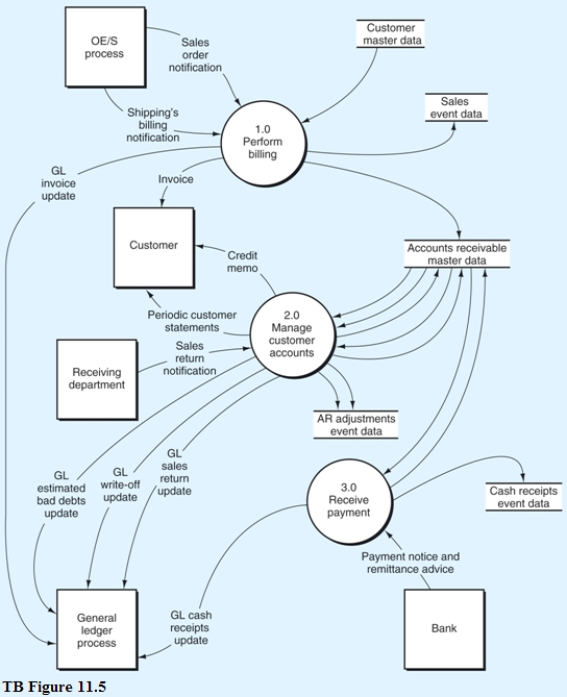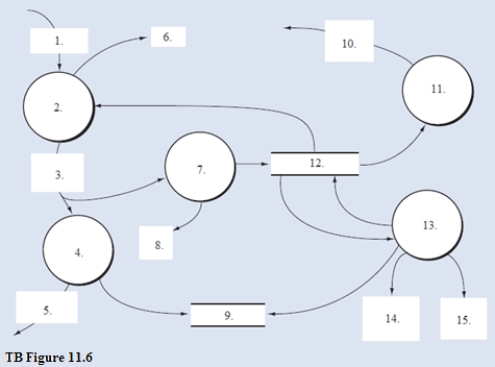Below is the narrative of the "Manage customer accounts" portion (i.e., bubble 2.0) of the B/AR/CR process.
Narrative Description
Processes 2.1 through 2.3 relate to sales returns adjustments. This process begins when there is notification from the receiving department that goods have been returned by a customer. Subprocess 2.1 obtains data from the accounts receivable master data to validate the return. If the sales return is not valid, it will be rejected (see Reject stub) and processed through a separate exception routine. If the sales return is valid, it is sent to subprocess 2.2 where a credit memo is prepared and sent to the customer, and the accounts receivable master data is updated to reflect the credit. At the same time, the validated sales return is sent to subprocess 2.3 where a journal voucher is prepared, which is used to create a record in the AR adjustments event data store (i.e., the journal), and the general ledger is notified that a credit memo has been issued. This results in updates to sales returns and allowances and to AR.
Process 2.4 is triggered by a periodic review of aging details obtained from the accounts receivable master data. The aging details would be used to identify and follow up on late-paying customer accounts. One of two types of adjustments might result from this review:
The recuring adgusting entry for estimated bad debts.
The periodic wite-off of "definitely warthess" customer accounts Like process 2.4, bubble 2.5, "Prepare customer statements," also is triggered by a periodic event that recurs at specified intervals, often on a monthly basis in practice. Details of unpaid invoices are extracted from the accounts receivable master data and are summarized in a statement of account that is mailed (or sent electronically) to customers.
Required:
Using the DFD in TB Figure 11.5 and the narrative description above, identify the words that belong in items 1 to 15 of Diagram 2.0 (TB Figure 11.6).


Definitions:
Q12: The _ data shows, in chronological sequence,
Q19: Used in conjunction with a perpetual inventory
Q20: The process of encoding data so that
Q47: In order to implement a batch sequence
Q75: Which of the following shows start and
Q88: The OE/S process addresses the decision needs
Q94: The document one business sends to another
Q102: The ACH network electronically transfers funds by
Q113: Buy-side systems are designed to allow a
Q137: Which of the following is a technique